Introduction
The following paper aims at discussing the peculiarities of English sound creation. Particularly, English vowels along with their classification and basic characteristics and consonants along with their types, manner of articulation, and place of articulation will be considered. The types of vowels the paper observes are basic, mid, lax, nasal, front, high, back, and diphthongs.
Description of English Vowels and Consonants
English Vowels
As demonstrated in Fig. 1, English vowels are classified according to the tongue position and lip rounding (Odden, 2005). Based on the tongue position, the vowels are divided into high, mid, and low depending on tongue height in the oral cavity and front, central, and back depending on tongue advancement (Odden, 2005). As to the lip rounding, vowels are rounded and unrounded (Sloat, Henderson & Hoard, 1978).
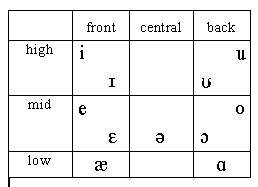
Basic vowels
Basic English vowels include /ǽ/, /έ/, /a/, /e/, /ά/, /i/, /I/, /ε/, /o/, /u/, /υ/, /כ/, and /ә/ as shown in Fig 2. These vowels appear in such words as cat, dog, cup, net, and thus, they are traditional proto-English sounds.
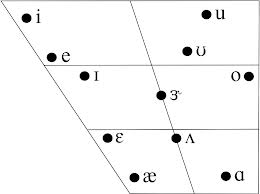
Mid vowels
Mid vowels are the vowels produced as a result of using the mid height tongue position. They include /e/, /ε/, /ә/, /o/, and /כ/ (Odden, 2005). The examples of words with these sounds are pen, red, and pot.
Lax vowels
Lax vowels are also called short vowels because of the nature of their pronunciation. The list of lax vowels in English includes the sounds /ǽ/, /Λ /, /σ/, / υ/, /i/, /e/, and /ә/. Lax vowels are always short and they are mostly unstressed (Carr, 2012). The examples of words with these sounds are cup, nut, lot, and map.
Nasal vowels
Nasal vowels are an ambiguous phenomenon in English. Modern linguists believe that vowel nasalization is peculiar for American English while in British English this phenomenon is rare (Carr, 2012).
Front vowels
Front vowels are /i/, /I/, /e/, /έ/, and /ǽ/ (Carr, 2012). These sounds can be found in such words as dig, twig, bed, and bird.
High vowels
High vowels are /i/, /I/, /u/, and /υ/ (Carr, 2012). The examples of words with such sounds are beat, bit, boot, and book.
Back vowels
Back vowels are /o/, /כ/, /ά/, /u/, and /υ/ (Carr, 2012). They can be found in the following words foot, cook, last, book, and wood.
Diphthong vowels
Diphthong vowels are the sounds that consist of the two sounds. They are shown in Fig. 3. These sounds are characterised by bigger length and stress. Diphthongs are combinations of pure sounds such as /o/ and /υ/. These sounds can be found in the following words: air, fare, hire, admire, and found.
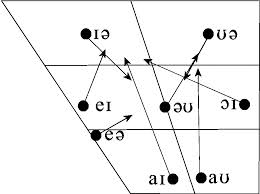
English Consonants
Types of consonants
As shown in Fig. 4, English consonants are divided into plosives, fricatives, plosives followed by fricatives, nasals, approximants, and glottal according to the manner of production (Roach, 2001). According to the state of glottis, consonants can be voiced and voiceless (Carr, 2012).
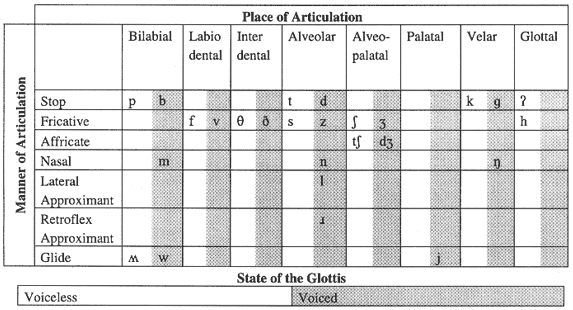
Manner of articulation
According to the manner of articulation, English consonants are classified into stop, fricative, affricative, nasal, lateral approximant, retroflex approximant, and glide (Carr, 2012).
Place of articulation
The points of consonant articulation are labial, labio-dental, dental, alveolar, post-alveolar, retroflex, palatal, velar, and laryngeal (Carr, 2012). Fig. 5 demonstrates the location of consonant articulation.
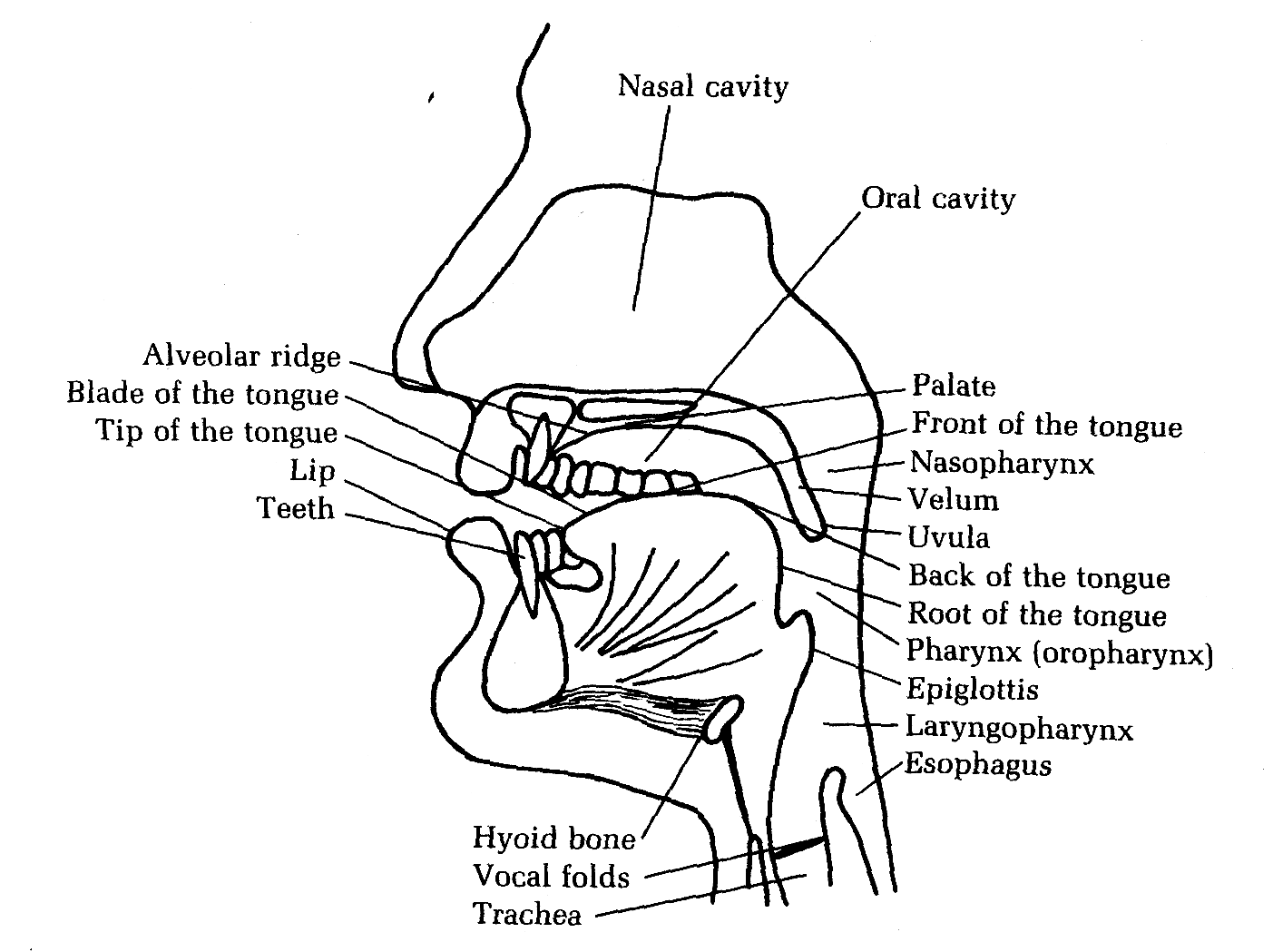
References
Carr, P. (2012). English phonetics and phonology: An introduction. Hoboken: Wiley-Blackwell.
Odden, D. (2005). Introducing phonology. Cambridge: Cambridge University Press.
Roach, P. (2001). English phonetics and phonology. Cambridge: Cambridge University Press.
Sloat, C., Henderson, S., & Hoard, J. (1978). Introduction to phonology. New York: Prentice Hall.